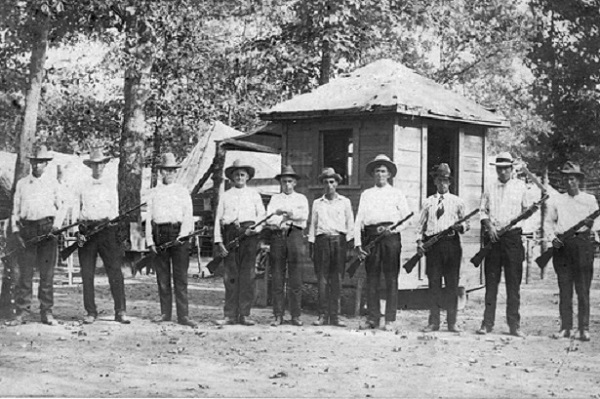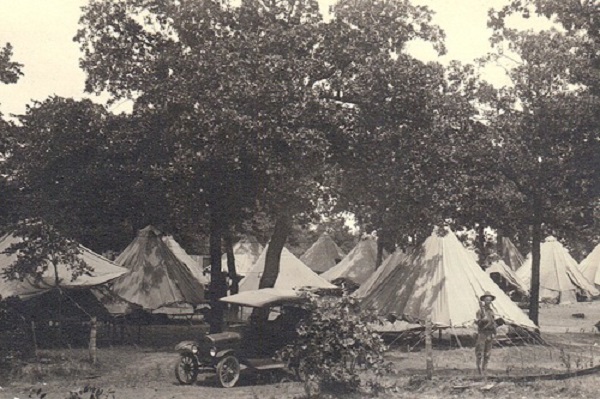 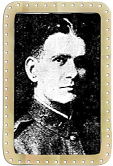 Col. Charles William Nimon Dallas Morning News, July 31, 1922 The second son of James
Nimon (1849–1905) and Nellie Rood Nimon
(1848–1930) led an unusual life, one that took
him far from Denison, Texas, and then brought
him back to play a dramatic role in his
hometown's history.
Charles William Nimon (1876–1943) had dual careers—as an undertaker and as a soldier. Having been born at Leavenworth, Kansas, before his parents moved to Texas, Charles at age 13 helped to found the Denison Zouaves, a military club. From his teen years on, he was a member of the National Guard. In 1896, Charles was a clerk learning the undertaking trade by working for Isaac Lindsey. The Lindsey business was located at 502–504 West Main (in the first Denison Hotel); Charles lived on the premises. Two years after that, at 22, he was off to the Spanish American War, serving as first lieutenant of Company K, Third Texas Volunteers, known as the Denison Rifles. By 1900, Charles was back in Denison, engaged as an undertaker. That year he married his wife, Grace, and they lived at 700 West Chestnut Street. He formed a partnership with Elmer E. Davis to operate "Davis & Nimon, Funeral Directors and Embalmers, Pictures and Picture Frames," at 511 West Main Street. After several years, the partnership dissolved, and the Nimons moved to Gainesville in Cooke County, Texas, where in 1907 Charles was funeral home director for Bass & Harbour Undertaking Company.  Davis & Nimon, Funeral Directors and Embalmers Principals: Elmer E. Davis and Charles W. Nimon 511 West Main Street, Denison, Texas Source: 1906 Denison City Directory Listing reads: "Davis & Nimon (Elmer E. Davis, Charles W. Nimon), funeral directors and embalmers, pictures and picture frames, 511 West Main Street."  In July 1922, a nationwide strike by the Federated Railroad Shopmen's Union split Denison apart. Violence flared, causing Texas Governor Pat Morris Neff to declare martial law and send the National Guard to Denison. On July 28, 1922, Governor Neff notified Col. Charles W. Nimon that he would be in charge of troops sent to Denison. Nimon set up camp in Forest Park, which became an armed camp for many weeks. The park is near downtown Denison and at that time was just around the corner from the Katy Car Shops. Guardsmen shouldering guns patrolled crucial areas. Colonel Nimon issued orders prohibiting the sale of firearms within the military zone, as well as banning mass meetings such as those that had been held daily by strikers in the YMCA auditorium.
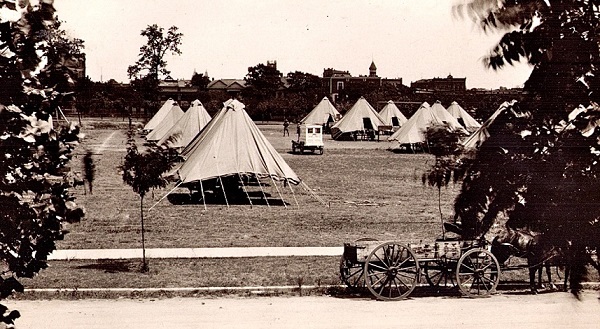 National Guard in Forest Park 1922  Courtesy of Grayson County Frontier Village What must Charles
have felt, being sent to Denison under such
circumstances? His father had died in 1905,
but several family members were still in
Denison in 1922. Living together at 616 West
Heron were Charles's widowed mother Nellie;
his brother Earl, a meter reader with the
City Water Works; and his sister Julia and
her husband, Clarence E. Majors, who ran a
florist business across the street. Though
they were not directly connected with the
railroads, it must have been terrifying for
them to see Charles at the epicenter of the
strike.
According to Donna Hord Hunt, in the wake of the strike, Denison's population decreased dramatically: "The exodus of workers is reflected in population figures recorded in yellowed city directories at the Denison Public Library. The 1921 directory estimated the population at 24,930. In 1930 the federal census set Denison’s population at 13,850, down more than 11,000 residents. That drop was primarily due to the strike eight years earlier." In the wake of the strike, the MK&T Railroad moved many jobs away from Denison. Some feel that the town never fully recovered from the economic impact. When Charles Nimon voluntarily retired from the National Guard in June 1940, the Dallas Morning News reported that his was "the longest record in the Texas National Guard," comprising "fifty years on battle field and parade ground." Texas Governor Lee O'Daniel awarded him the honorary rank of Brevet Major General. Two years later, Major General Nimon, then a resident of Fort Worth, passed away in Houston. His wife died shortly thereafter in Houston, where she had moved after his death.  Col. Nimon Served
in Many Struggles
Martial Law Commander Has Long Service Record in Texas Guard [Source: Dallas Morning News, July 26, 1922] Staff Special to the News. Denison, Texas, July 25 — Colonel Charles W. Nimon, who will be in command of the Third Battalion of the 142nd Infantry on strike duty in Denison, is one of the oldest officers in point of service of the National Guard. He served in the Spanish-American War as first lieutenant of Company K, Third Texas Volunteers, known as the Denison Rifles. He succeeded Cecil A. Lyon of Sherman with the 4th Texas Infantry and was on the Texas border from May 9, 1916, to Oct. 15, 1917, and joined the 36th Division when it was organized at Camp Bowie. He served with this division overseas to May 1, 1919. He has been connected with the National Guard of Texas since 1890. Major Claud Adams of Crowell, in charge of the Third Battalion of the 142nd Infantry, under the command of Col. Charles W Nimon, is a veteran of the Spanish-American War, having served in the Philippines and has been connected with the Texas National Guard since that time, serving on the Mexican border in 1916–1917 as captain of the 4th Texas Infantry. He served overseas with the 36th Division, commanding the Headquarters Company of the [missing]. He was commissioned a major in the Texas National Guard Oct. 24, 1921. Captain Que R. Miller of Company I served on the Mexican border with the 4th Texas Infantry and was overseas with the 36th Division. He was made captain of the Texas National Guard Dec. 1, 1921. Captain Stayton M. Hankins, Company K of Quanah, served in the Texas National Guard for many years. He was lieutenant of Company H, 142nd Infantry of the 36th Division. He was wounded while in overseas service with the 36th Division and received two decorations, a Distinguished Service Cross and the French Croix de Guerre. He was commissioned a captain of the Texas National Guard Aug. 5, 1921. Captain Claude D. Watts, Company I, served on the Mexican border with the 4th Texas Infantry in 1916–17 and went overseas with the 36th Division. He was commissioned captain of the Texas National Guard Aug. 5, 1921. First Lieutenant Harry I. Booth and practically every other officer who will be on duty in Denison saw overseas service. The executive staff will be made up as follows: Col. Charles W. Nimon, commanding officer ... Adjutant General Thomas D. Barton will remain in Denison indefinitely as Governor Neff's personal representative during the stay of the troops. Assistant Attorney General Clifford L. Stone will also be here as legal advisor. The Third Battalion was assembled and mobilized at Wichita Falls for duty in Denison by Lieutenant Colonel D. A. Weatherred, who has been engaged in the reorganization work of the National Guard under the direction of General Barton. Colonel Weatherred left the troop train when orders were received Sunday night at Wichita Falls to divert the movement to Austin. He arrived in Denison Monday and has been conferring with General Barton and Colonel Nimon since his arrival.  Fifty Years in
National Guard Ended When Charles W. Nimon
Retires as Brigadier General
by Paul Crume [Source: Dallas Morning News, June 20, 1940] The longest record in the Texas National Guard ended Wednesday when Charles W. Nimon of Fort Worth voluntarily retired after fifty years on battlefield and parade ground. The tall, spare Brigadier General, who joined the guard at 14, who patrolled the Mexican border during the tense days of 1916 and later fed the supply lines of the Meuse-Argonne drive, was given the honorary rank of Brevet Major General by Gov. Lee O'Daniel. His retirement from command of the Seventy-First Infantry Brigade brought promotions for J. Watt Page, present Adjutant General of Texas; Col. Nat S. Perrine of Austin; and Major Carl E. Wallace of Fort Worth. When General Nimon penned his letter of voluntary resignation the other day, he wrote the end to a whole volume in the history of the Texas Guard. When he joined up as a charter member of the Denison Zouaves in 1890, a boy who still was seventeen days on the slim side of 14, the guard was mainly a social club, manned by men and boys who got into it for its military balls and parties. The Zouaves earned their name from their florid, highly elaborate dress uniforms. Good Fighting Force Now "Today the guard is a fighting force, and a good one," he said in Dallas. "It is better manned and better trained than any of the so-called reserves of other nations. It lacks only equipment. This means that we have 235,000 men in the United States who can be turned into first-class soldiers with sixty days of training. "I have no regrets about the resignation. I would have been retired in a month or so, anyway, by the age limit, and I thought I'd get out in time to let someone break into my place for the August maneuvers." He will remain in his post as secretary of the State Advisory Board. Though as a youngster Nimon had joined a social club, he found out that it soon turned into an Army unit. After the Zouaves disbanded at Denison, he served out his noncommissioned grades with the Denison Rifles. When the Spanish-American War started, he became a lieutenant with Company K, Third Texas Infantry, which was moving slowly east toward Cuba when the war ended. Back with the Denison Rifles, he was promoted to Major Nov. 22, 1889, to Lieutenant Colonel May 1, 1902, and to Colonel Nov. 1, 1914. That put him in command of the Fourth Texas Infantry when trouble broke out on the Mexican border. On Border Patrol From May 3, 1916, to Oct. 15, 1917, he patrolled the border. As soon as troops showed up on the boundary line, the raids from Mexico stopped, General Nimon remembers. But the patrol was kept up. From his headquarters at Marfa, Nimon commanded twenty-three stations scattered along the river and along the railroad that ran along it some miles back. They used to shift the detachments every week, moving men in from the river to the railroad. In the vast West Texas space, living alongside the railroad where a train chuffed by occasionally was a treat. But the guardsmen in the ranks used to grumble about it. "But a soldier that won't beef won't fight," Nimon said with a grin. He was stationed at Brownsville when the government pulled the regiment into Camp Bowie to form part of the Thirty-Sixth Division at the start of the World War. At the camp, he commanded the Sixty-First Depot Brigade for a while and then was transferred to the command of the 111th train headquarters and military police. After they went across the water in July, 1918, it was his job to truck supplies from the nearest railhead into the dump that served one of the divisions fighting the Meuse-Argonne battle. His men drove the supply train through almost continual shellfire. At every crossroads, German shells would boom down on the roadbed, until sometimes the junction was destroyed, and the drivers of the 300 trucks in Nimon's fleet had to detour. As the division advanced, the dump got farther and farther away from the railhead. The approved practice was to truck in the supplies under cover of night, but Nimon and his men started moving them in broad daylight. They did not lose a truck or a man during the war. Looking back on those days, the rangy Brigadier General with the lean, clipped jaw and the graying military haircut can see a lot of change in warfare. For one thing, he thinks the supply line of an armored column might be its most vulnerable point. "I don't see how they could move in supplies fast enough to catch up with the head of a column moving like those did which drove down into France," he said "I'm inclined to think that those motorized advance units must have depended on living off the land. Of course, they could carry supplies for two or three days." In today's war with airplanes and modern bombsights, the supply train would be a much more hazardous job, he said. Back in the United States in 1921, Nimon rejoined the National Guard and was assigned to command the 142d Infantry. He received his Brigadier General's commission Nov. 1, 1935, being assigned to the Seventy-Second Brigade and then to the Seventy-First. In a lengthy general order, O'Daniel promoted Adjutant General Page, who previously held the line rank of colonel in command of the 142nd Infantry, to succeed General Nimon. Page, a military man for forty-one years, is a former member of the War Department general staff and assistant chief of the National Guard Bureau. He was one of the fourteen regular Army, Reserve and National Guard officers detailed to reorganize the United States Army after the World War. Lieutenant Colonel Perrine, who becomes a colonel and replaces Page, holds the French Croix de Guerre. He served on the border and in the World War. A graduate of the infantry school at Fort Benning, Ga., the chemical warfare school, and the command and general staff school, he worked on the War Department's general staff for four years. Major Wallace becomes lieutenant colonel of the 142d Infantry, replacing Perrine.  General Nimon
Dies at Houston
Dallas Morning News, March 19, 1943 Houston, Texas, March 18 (AP) — Major Gen. Charles William Nimon, 66, retired secretary of the Texas armory board, died tonight in a hospital here. General Nimon had retired two years ago after some fifty years of Army service, which included participation in the Spanish-American War, the first World War, and Mexican campaigns. Surviving are his wife, Mrs. Grace Nimon, Houston; four daughters, Mrs. Felix Thaxton, Austin; Mrs. William S. Barrett, Abilene, Kan.; Mrs. Walter Gibbs, Chicago; and Miss Rebecca Nimon, Dallas; a son, Charles Walter Nimon Jr., Sacramento, Calif.; two sisters, Mrs. J. C. Horn, McAlester, Okla., and Mrs. Clarence Majors, Denison; two brothers, Earl Nimon, Denison, and W. A. Nimon, Parsons, Kan., and five grandchildren. 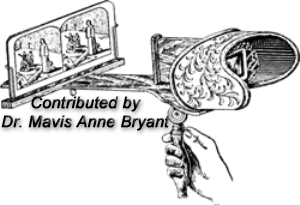 Biography Index Susan Hawkins ©2025 If you find any of Grayson County TXGenWeb links inoperable, please send me a message. |
